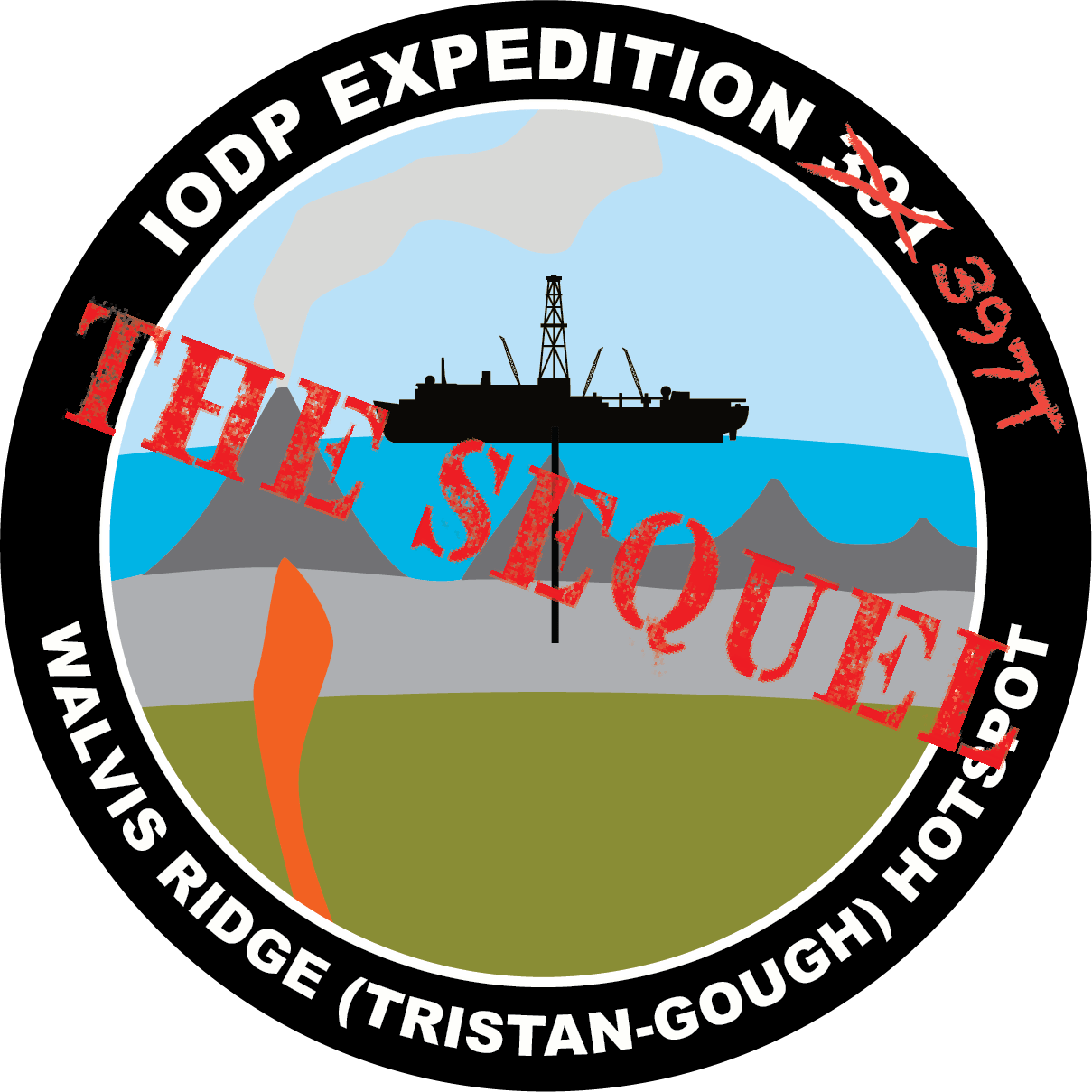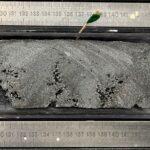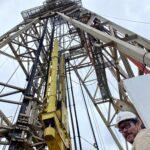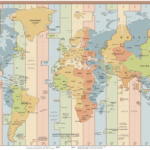
Transit and Return to Walvis Ridge Hotspot
Have you ever found yourself wishing for a second chance? Another opportunity to go back and finish what you started, or find closure on something incomplete? Too often, these opportunities are few and far between, but for the International Ocean Discovery Program, the odds have turned in our favor.
Expedition 391 set out from the port of Cape Town, South Africa in December 2021, with the goal of answering decades-old questions about an unusual seafloor feature known as the Walvis Ridge. Not long into the expedition, enough of the ship’s party tested positive for COVID-19 that it was necessary to return to port under COVID-19 mitigation protocols until the virus had been eradicated. These measures resulted in a loss of almost a third of the expedition’s planned operational time, meaning that drilling at only four of six planned sites could take place.
Though the primary goal of Expedition 397T is to transit the JOIDES Resolution to the port of Lisbon, Portugal for the next several expeditions in the North Atlantic ocean, seven days of operational time (weather permitting) will be devoted to completing Expedition 391’s unfinished business, enhancing scientists’ ability to answer critical questions about the mysteries of the Walvis Ridge.
An unconventional hotspot track
The Walvis Ridge is a chain of seamounts and volcanic ridges with an unusual morphology. Hotspot tracks typically have a “string of pearls” pattern – a relatively straight line of individual volcanic mountains that increase in age with distance from an active volcano. These features were an important discovery in the development of the theory of plate tectonics, as scientists were able to connect their formation to the movement of Earth’s lithospheric plates. For more details about the science of hotspot tracks, read the EXP391 blog post Hotspot Whodunnit.
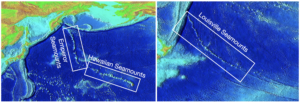
As is the case with most scientific pursuits, hotspots and the development of their volcanic tracks are not as straightforward as scientists would like. The Walvis Ridge is exceptional evidence of this fact. Instead of a simple chain of seamounts like the Hawaiian or the Louisville seamounts, the Walvis Ridge consists of a huge volcanic oceanic plateau, known as the Valdivia Bank, that branches into three distinct volcanic chains, which are together referred to as the “trident.” From northwest to southeast, the prongs are called the Tristan Track (named for the Tristan da Cunha islands at the end of the chain), the Central Track, and the Gough Track (named for Gough island).
This unique appearance hints at a complex history, and despite years of research, many questions still remain: To what extent was the formation of Valdivia Bank influenced by interaction with the Mid-Atlantic Ridge during its formation? Does Valdivia Bank preserve evidence of a microplate (a bit of plate torn from the major tectonic plates) that influenced its volcanism over time? Do the three prongs of the trident signify the interaction of two, or even three mantle plumes below the seafloor? And to what extent can the rocks of Walvis Ridge provide evidence that Earth’s entire mantle shifted relative to its axis of rotation, a process known as true polar wander?

For seven days, Expedition 397T will return to Walvis Ridge to collect core samples from two more locations, one in the Tristan Track, and the other in the Gough Track. At each site, 50 hours of coring time is expected to recover up to 100 m of preserved lava flows. Petrological, geochemical, and paleomagnetic analyses of these new rocks, along with those carried out as part of Expedition 391, will provide scientists with the data necessary to make new interpretations about the history of the Walvis Ridge. With this additional information, we will be able to refine our model and test hypotheses of the ways in which mantle plumes drive the structure and evolution of Earth’s mantle and impact the formation and evolution of oceanic crust. Thus, we will be able to develop a deeper understanding of how the Earth’s interior shapes our planet’s tectonic plates.
